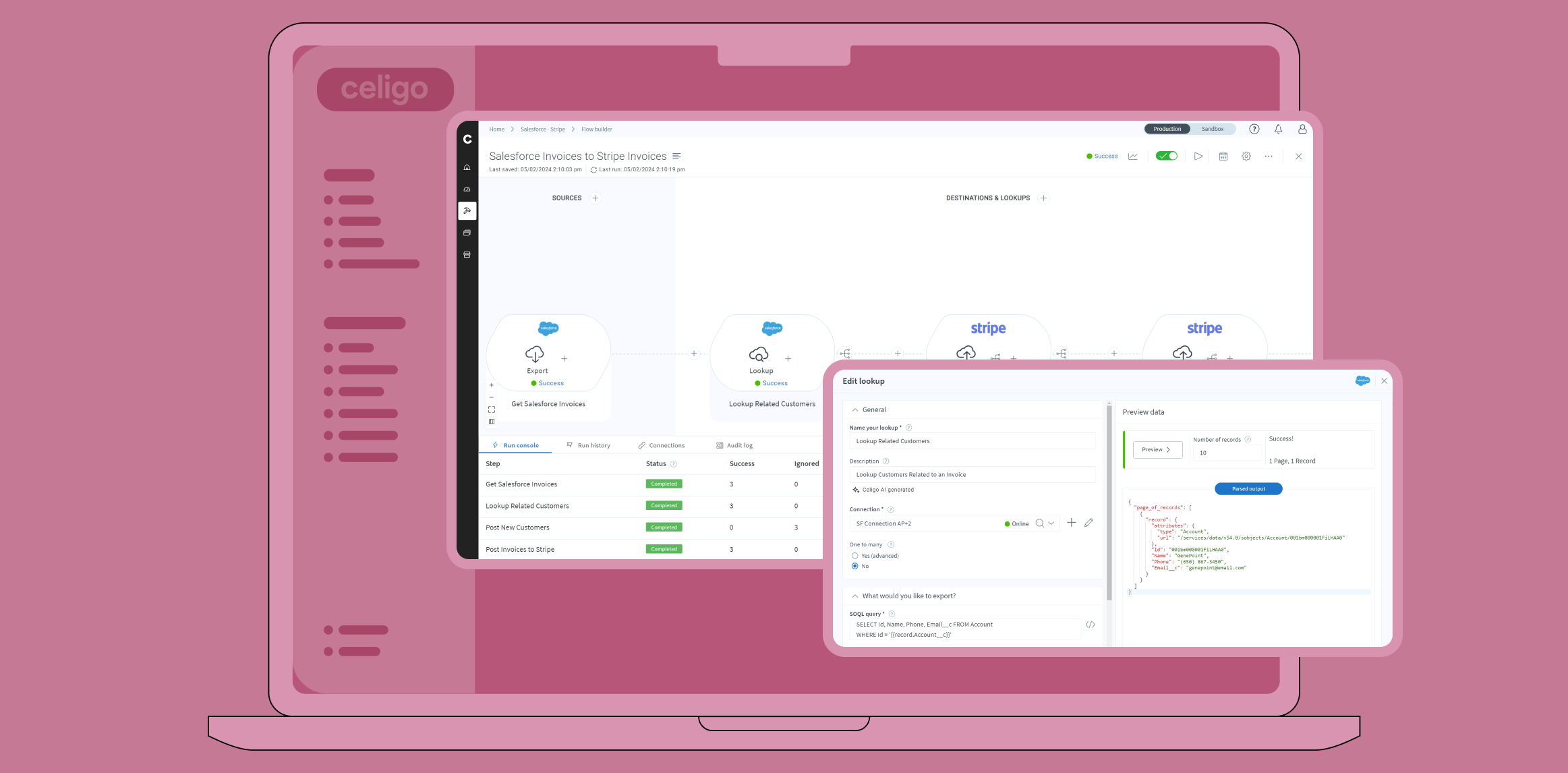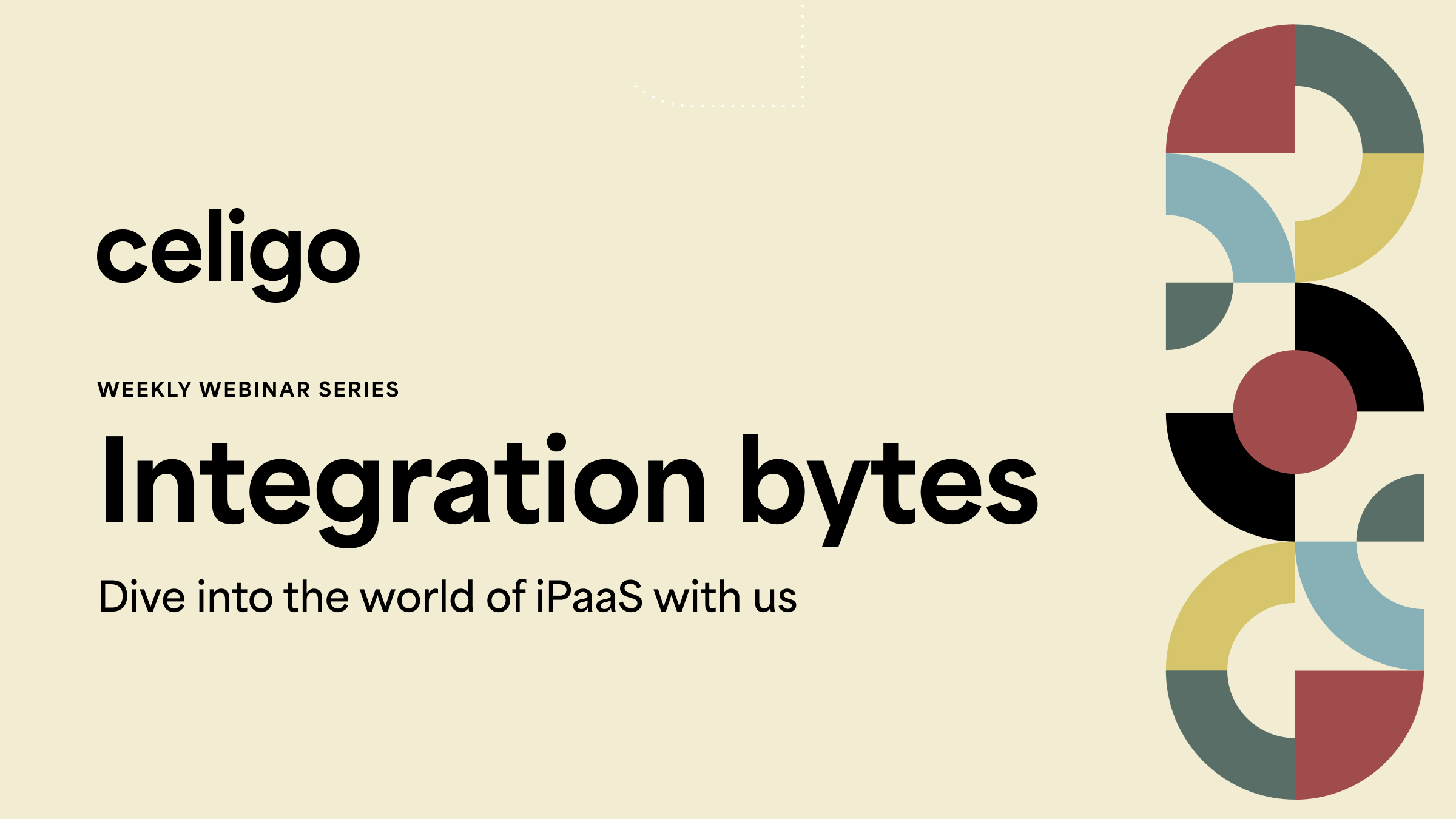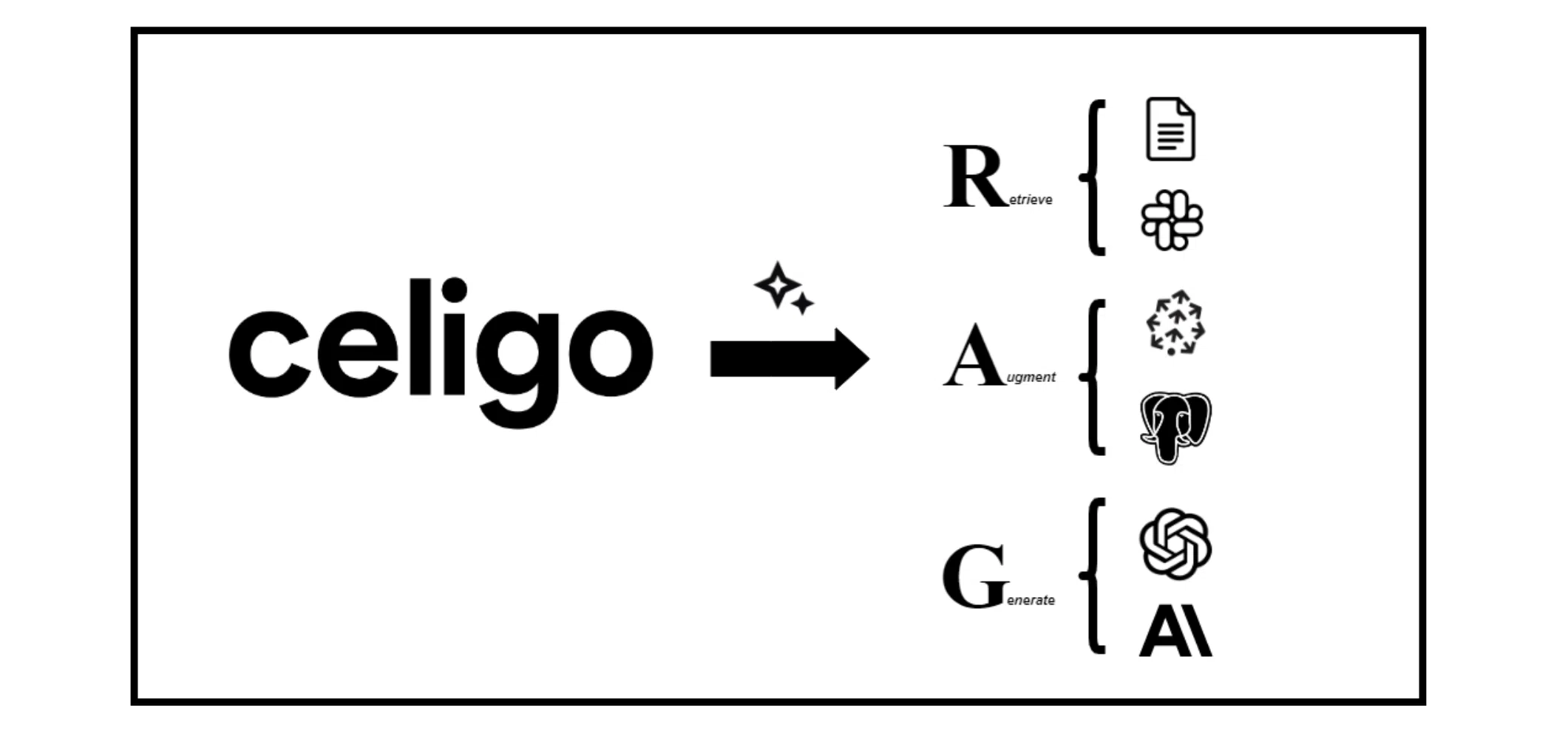Published May 8, 2024
Celigo vs. Workato: Making the right choice
- Understanding software’s original intent is key for choosing the right tools.
- Workato’s architecture is geared to task automation not enterprise integrations.
- Celigo’s data volume and error monitoring capabilities were built for scalability.
In the evolving landscape of digital transformation, businesses face the critical decision of selecting an integration platform that not only meets their current needs but is also scalable and reliable for future demands. When it comes to automating data-focused business processes, especially those that span across mission critical systems such as Enterprise Resource Planning (ERP) and Customer Relationship Management (CRM) systems, the choice between Celigo and Workato hinges on their foundational design intents and how these align with enterprise integration requirements.
Understanding original intent in software design
The concept of “original intent” in software design refers to the primary purpose and foundational architecture envisioned when a software solution is first created. This initial blueprint significantly influences how the software evolves, its adaptability to new challenges, and its suitability for various applications. Understanding the original intent is crucial for selecting the right tools for specific business needs, as it determines the core capabilities and limitations of the software.
Original intent and design philosophy
Celigo was specifically designed as an integration platform aimed at automating data-focused business processes across complex enterprise systems. This foundational intent is reflected in its architecture, which inherently supports scale and resilience required for mission-critical integrations. This makes Celigo inherently better suited for enterprise-wide applications where data integration plays a central role in operational continuity and strategic decision-making.
In contrast, Workato began as a task automation platform, which later evolved into an Integration Platform as a Service (iPaaS). Although Workato has expanded its capabilities to include application integration, its core architecture is still geared towards automating tasks rather than handling comprehensive, data-intensive enterprise integrations. This fundamental difference in design philosophy can significantly impact the effectiveness of the platform in scenarios where robust data integration is crucial.
Scalability and high-volume handling
Celigo is built for scalability, with a focus on supporting large volumes of data and complex integration scenarios. This is crucial for enterprises that require reliable performance under varying loads and complexities, ensuring that critical business processes remain uninterrupted.
Workato, while versatile in automating a variety of tasks, struggles with high-volume use cases due to its task-based architecture. This limitation makes it less suitable for businesses looking to implement system-wide integrations that must handle large datasets and high transaction volumes seamlessly.
Error handling and monitoring
Another key distinction lies in how each platform approaches error handling and monitoring. Celigo treats monitoring as a core component of the platform, which underscores its commitment to reliability and transparency throughout the integration process. This approach ensures that any issues are promptly identified and addressed, minimizing downtime and the potential impact on business operations.
Workato, however, views error handling as a task within a recipe, which can lead to complexities and potential oversights in managing integration flows effectively. This method places the burden on developers to incorporate error handling explicitly in each workflow, potentially increasing the risk of errors going unnoticed or being inadequately resolved.
Pricing structure
Celigo’s pricing strategy is reflective of its emphasis on integration value, focusing on the number of connections between applications and the flows of data. This predictable pricing model is more aligned with enterprises needing comprehensive integration solutions that span multiple systems and data sources.
Workato’s pricing is based on tasks, which might not always correspond directly to the value delivered through complex integrations. This can lead to cost inefficiencies for companies requiring extensive data integration capabilities, as they might end up paying for high volumes of tasks that are not directly tied to the core business outcomes.
Conclusion
For businesses prioritizing robust, scalable, and reliable data integration across foundational business systems, Celigo emerges as the more suitable choice. Its foundational design as an integration platform, combined with its scalability, inherent error handling, and enterprise-focused pricing model, makes it better equipped to handle the demands of mission-critical data integrations. On the other hand, Workato’s task-oriented architecture and pricing model make it a good fit for automating individual tasks and simpler integrations but less effective for comprehensive, enterprise-wide data integration needs. Dive deeper into the differences between Celigo and Workato in the latest G2 report.




